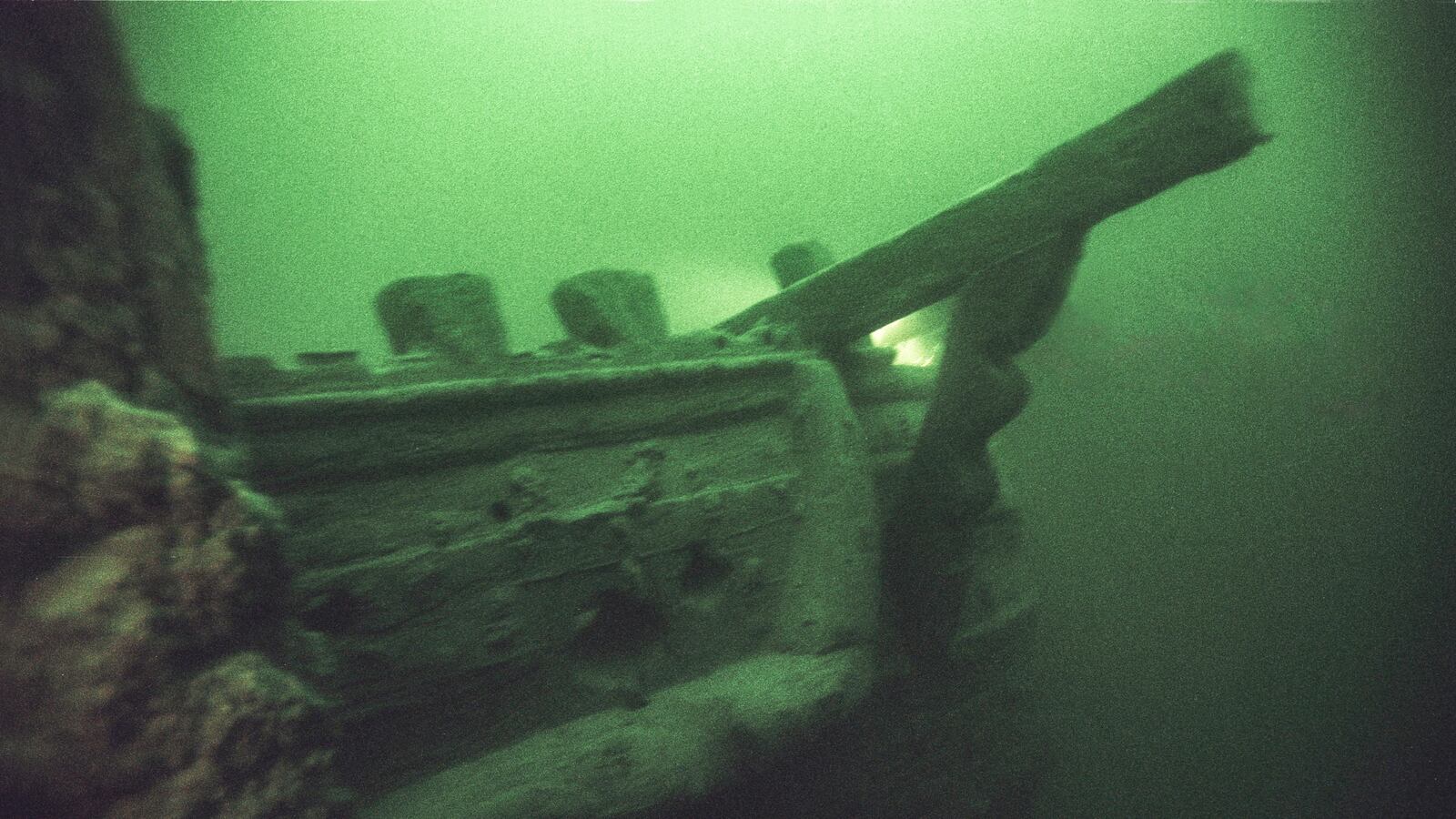In October 1771, a merchant ship out of Amsterdam, the Vrouw Maria, crashed off the stormy Finnish coast, taking her historic cargo to the depths of the Baltic Sea. The vessel was delivering a dozen Dutch masterpiece paintings to Europe’s most voracious collector: Catherine the Great, Empress of Russia. The Vrouw Maria became a maritime legend, confounding would-be salvagers for more than two hundred years. In 1999, the daring Finnish wreck hunter Rauno Koivusaari set out to find it with his team, the Pro Vrouw Maria Association.
Midsummer is the time of year when Finns get in touch with their inner pagan. Before the encroachment of Christianity, summer solstice was the high holiday of the northern Baltic. White night revels involved spring potato picnics, fermented beverage consumption, and naked dance parties (at least two of these rituals are still widely practiced). The solstice signaled the transition from spring sowing to summer growing, and the critical interlude for appeasing nature’s fickle spirits, whose mystic powers and mischievous penchants were enhanced during the midnight sun. Large bonfires were lit on midsummer’s eve to frighten off ill-tiding phantoms, who might otherwise spoil the harvest or burn down a barn. Young maidens, meanwhile, delicately tucked seven wild flowers, picked from seven meadows, under their pillow, in hopes of seeing their future mate revealed in a dream. Along Finland’s west coast and throughout the islands, revelers erected long-limbed maypoles, decorated with spruce garlands, flower-woven wreaths, and jangly trinkets. Looking like a boa-clad ship’s mast, archipelago maypoles protected fishermen and sailors against the Baltic’s spiteful water demons.
Rauno chose midsummer as the launch date for Pro Vrouw Maria’s expedition. From his many years in the archipelago, he observed that the sea was uncharacteristically placid during the fortnight which followed summer solstice. Under the best circumstances, the team would have only two weeks to find and survey the wreck. He hoped to avoid the diver’s bane of bad weather and rough water.
Saturday, June 26th, five days following midsummer, Teredo set off from Helsinki for Jurmo Island, at the southern edge of the Archipelago Sea. A throng of friends, reporters, and well-wishers lined the waterfront. Representing the Maritime Museum of Finland was chief archeologist Sallamaria Tikkanen. The Pro Vrouw Maria Association crew impressed, donning crisp uniforms of collared short-sleeve khaki shirts and pressed navy-blue shorts, with the Honda Marine logo emblazoned on their caps. The media-savvy team organized a press conference, which drew Finland’s largest newspapers and state-run television network.
The press rallied behind the expedition. “Another search is underway for the ship that sank carrying precious artworks. For the past few summers, different dive groups have been searching for the wreck. But this year’s team possesses newly uncovered information about the location,” effused the major daily Helsingen Sanomat. The media showed particular interest in the Teredo’s high-tech system. “The crew is equipped with state-of-the-art side-scan sonar, which takes ‘aerial photos’ of the seabed,” the newspaper said. “Similar equipment is used by the special forces of the US Navy.” Rauno explained to the reporters how the search process would work: “All sightings resembling a wreck will be checked by divers. It’s not like there are huge letters on the hull saying ‘Vrouw Maria.’ Identifying the wreck requires expertise.” The press was eager to play along. Pro Vrouw Maria’s search to find Catherine the Great’s lost treasure ship was the perfect feel-good story to kick off the summer holiday season.
It was a brilliant send-off, but for one inevitable moment. While posing for photos, Rauno overheard Sallamaria Tikkanen offhandedly remark to a reporter: “There go the boys, off to play and have an adventure.” An undercurrent of mutual acrimony briefly surfaced. The normally reactive Rauno bit his lower lip, and let the comment drift away on a Baltic breeze. Sallamaria was not heard from again. The fanfare concluded by mid-afternoon, and Teredo was ready to shove off. Looking through the windscreen of the raised bridge, Rauno piloted the vessel out of the harbor. Picking up speed, the Finnish flag slapped at the wind high above the main deck. The quest was underway.
Rauno set a west-southwest course, for the 130-mile voyage. The Teredo journeyed partly at night, but never in darkness. As the hour grew late, the midsummer sky turned an eerie smoky blue and faintish yellow overhead. The first half of the trip ran along the southern Finnish coast, punctuated by two jagged peninsulas. Twenty miles west of Helsinki is Porkkala, whose southern tip is just twenty-two miles north of Estonia. Given its strategic value, the Soviet Red Army refused to evacuate Porkkala for more than a decade following World War II. The Teredo next came to the Hanko peninsula, where the crew stopped to refuel and sleep for a few hours. To the south they could see the great beacon of Bengtskär, tallest lighthouse in Scandinavia. Standing at the entrance to the Gulf of Finland, Bengtskär’s petrol-fueled spotlight and twenty-two foot foghorn warned vessels as far away as twenty miles of the deadly danger in the waters nearby. This was the Teredo’s destination, the Archipelago Sea.

On Monday, June 28th, at 4 AM, the Teredo arrived at the island of Jurmo. Astern, the sun was rising, after lurking just below the horizon during the night. The island was a level and sparse heathland, except for one lonely tree, bent by the wind. Local lore has it that Jurmo was once covered in pine woods, like most of the archipelago, until its inhabitants incurred the wrath of the Swedish King with their false signal fires and wreck looting. In retribution, King Gustav Vasa, in the 16th century, sent his troops to incinerate the island’s dwellings, farmland, and forest. Only a couple of islanders and a single tree, it is said, survived the royal reckoning. Jurmo was eventually resettled, as an incestuously self-contained fishing village. When the Vrouw Maria foundered on the rocks nearby, in 1771, the island’s population was at an all-time peak of sixty residents.
On Monday morning, Rauno strode upon the same eroded granite slope that Captain Reynoud Lourens had alighted more than two centuries before. Just beyond, the island moor was a knee-high palette of heather, juniper, and crowberry. On a bluff overlooking the leeside jetty, a freshly decorated forty-foot midsummer maypole jingled in the breeze. The island seemed frozen in time.

"The island of Jurmo, northwest of the wreck site"
Mara VorheesThe crew had a leisurely start on the first morning, with coffee, black bread, and sausage, the same thing they would eat for every meal for the rest of the week. In the afternoon Rauno called his team to attention. With clipboard in hand, Rauno barked out the roster and assigned tasks. He then spoke of the rare opportunity the team had to make history. Based on his calculations, they had a 90 percent chance to find the Vrouw Maria in the first two days. Otherwise, he cautioned, they had a 10 percent chance at best thereafter.
The captain went up to the bridge, as the crew assumed their roles. Belching a dusky trail of exhaust fumes on the breeze, the Teredo chugged out past the harbor’s manmade breakers. Even now, only Rauno and Petri knew their destination. Rauno pushed on the throttle and the converted trawler thrashed forward at fifteen knots toward the open water of the outer archipelago. Jurmo’s midsummer maypole dwindled in the west above the frothy wake. A half hour later, Teredo was idling over a shipwreck.
* * *
A ghostly shipwreck, a lost masterpiece painting, a lustful tsarina, the news of Vrouw Maria’s discovery stirred imaginations in the summer of 1999. It also sparked questions, namely: Who owns the treasure under the sea?
Besides the wreck hunter Rauno and the Maritime Museum, representing the government of Finland, there were additional claimants to Vrouw Maria. It was a Dutch-owned ship, in service to Dutch merchants. Would present-day corporate legatees in the Netherlands step forward to press claim? What is more, at the time of Vrouw Maria’s sinking there was no sovereign state of Finland. Sweden was then lord of the Archipelago Sea. What claim might Sweden make on the historic shipwreck? Finally, there was Russia. It was beyond dispute that Vrouw Maria’s treasure belonged to Empress Catherine the Great, who had paid dearly for the bounty within. The Tsarina made every possible effort to retrieve her property after the tragedy. What would Catherine’s heirs do now that it was found? Could the Finns fend off these challenges? And, if so, what would be their plan for Vrouw Maria?
Excerpted from The Tsarina’s Lost Treasure: Catherine the Great, a Golden Age Masterpiece, and a Legendary Shipwreck by Gerald Easter and Mara Vorhees. Courtesy of Pegasus Books.


